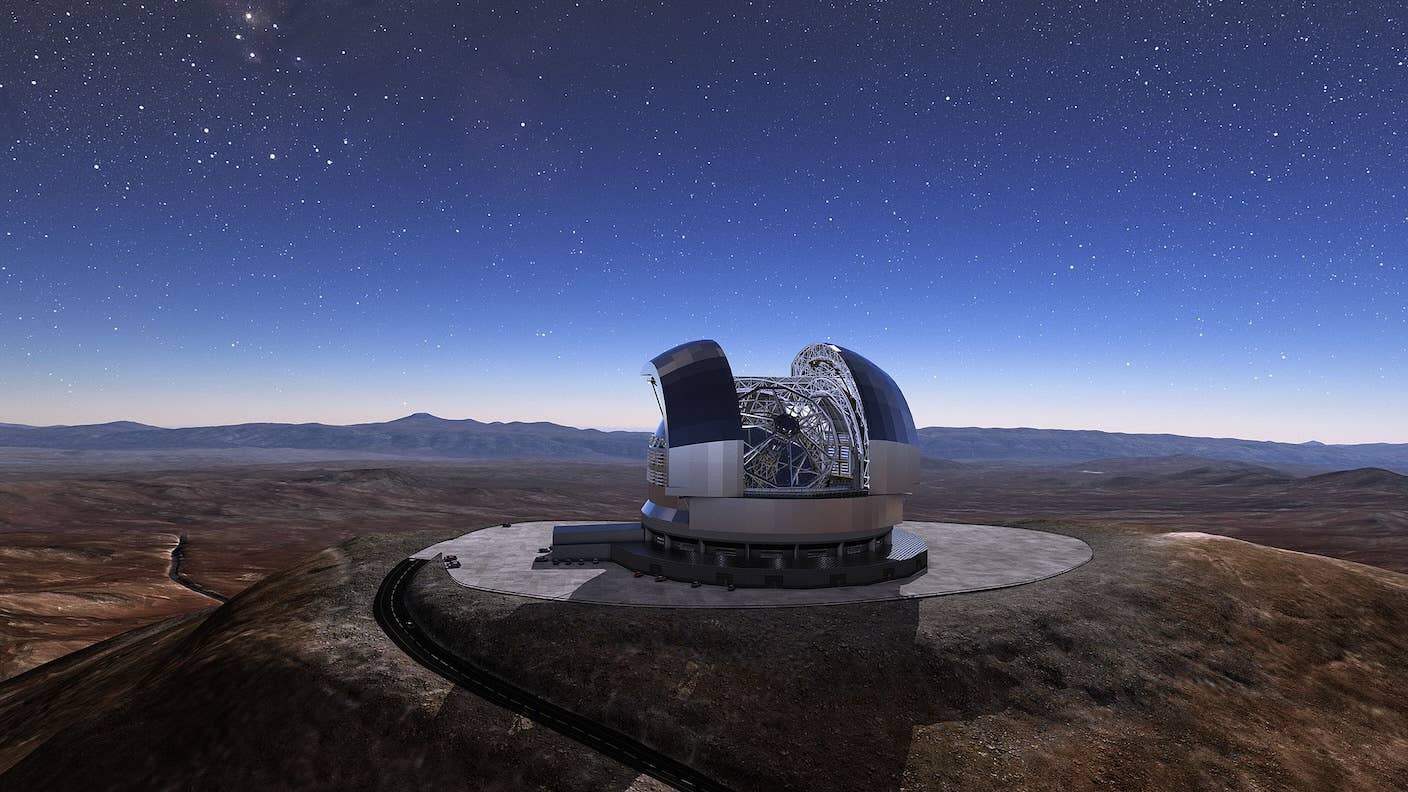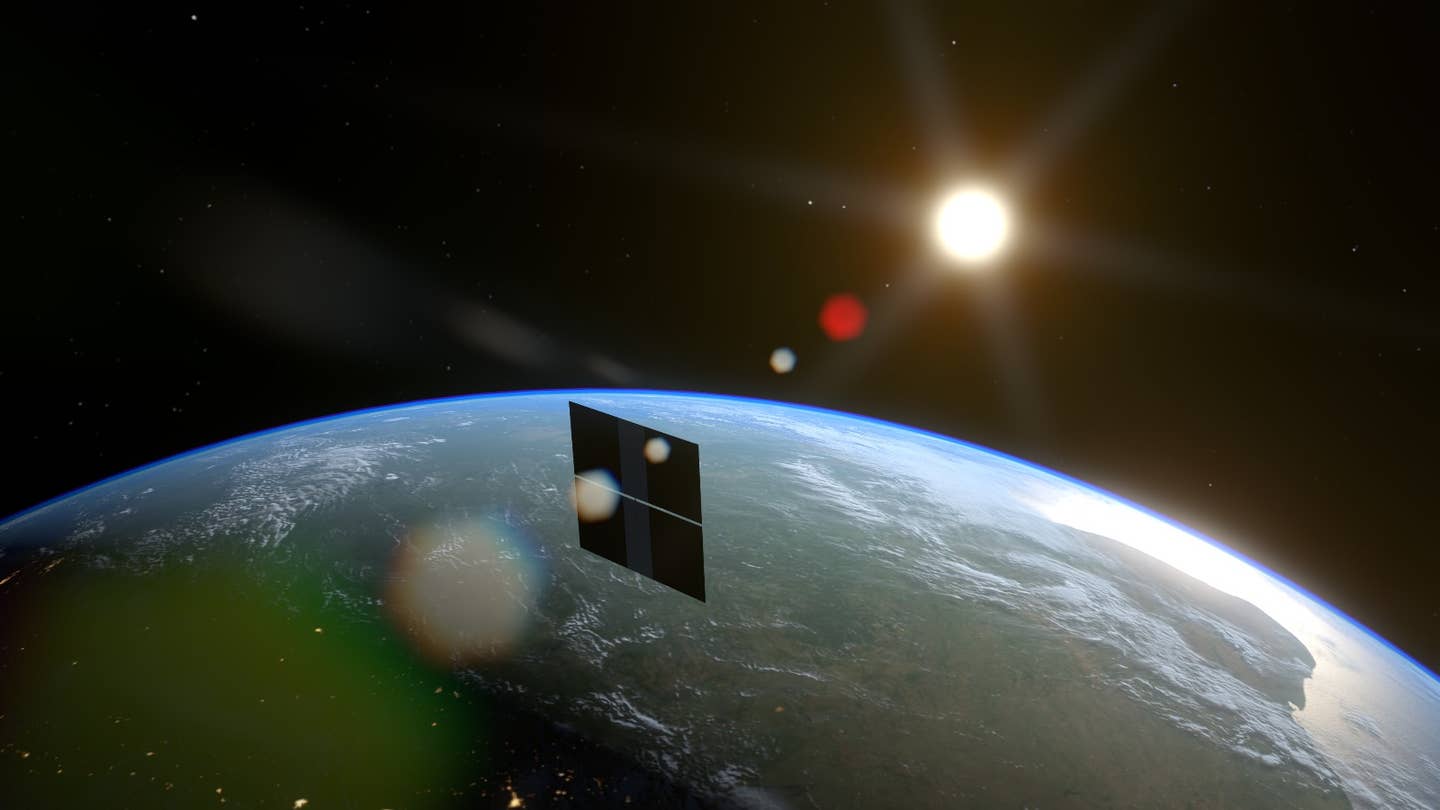How the World’s Biggest Optical Telescope Could Crack Some of the Greatest Puzzles in Science

Share
Astronomers get to ask some of the most fundamental questions there are, ranging from whether we’re alone in the cosmos to what the nature of the mysterious dark energy and dark matter making up most of the universe is.
Now, a large group of astronomers from all over the world is building the biggest optical telescope ever—the Extremely Large Telescope (ELT)—in Chile. Once construction is completed in 2028, it could provide answers that transform our knowledge of the universe.
With its 39-meter diameter primary mirror, the ELT will contain the largest, most perfect reflecting surface ever made. Its light-collecting power will exceed that of all other large telescopes combined, enabling it to detect objects millions of times fainter than the human eye can see.
There are several reasons why we need such a telescope. Its incredible sensitivity will let it image some of the first galaxies ever formed, with light that has traveled for 13 billion years to reach the telescope. Observations of such distant objects may allow us to refine our understanding of cosmology and the nature of dark matter and dark energy.
Alien Life
The ELT may also offer an answer to the most fundamental question of all: Are we alone in the universe? The ELT is expected to be the first telescope to track down Earth-like exoplanets—planets that orbit other stars but have a similar mass, orbit, and proximity to their host as Earth.
Occupying the so-called Goldilocks zone, these Earth-like planets will orbit their star at just the right distance for water to neither boil nor freeze—providing the conditions for life to exist.

Size comparison between the ELT and other telescope domes. Image Credit: ESO/ Wikipedia, CC BY-SA
The ELT’s camera will have six times better resolution than that of the James Webb Space Telescope, allowing it to take the clearest images yet of exoplanets. But fascinating as these pictures will be, they will not tell the whole story.
To learn if life is likely to exist on an exoplanet, astronomers must complement imaging with spectroscopy. While images reveal shape, size, and structure, spectra tell us about the speed, temperature, and even the chemistry of astronomical objects.
The ELT will contain not one, but four spectrographs—instruments that disperse light into its constituent colors, much like the iconic prism on Pink Floyd’s The Dark Side of the Moon album cover.
Each about the size of a minibus, and carefully environmentally controlled for stability, these spectrographs underpin all of the ELT’s key science cases. For giant exoplanets, the Harmoni instrument will analyze light that has traveled through their atmospheres, looking for signs of water, oxygen, methane, carbon dioxide, and other gases that indicate the existence of life.
To detect much smaller Earth-like exoplanets, the more specialized Andes instrument will be needed. With a cost of around €35 million, Andes will be able to detect tiny changes in the wavelength of light.
From previous satellite missions, astronomers already have a good idea of where to look in the sky for exoplanets. Indeed, there have been several thousand confirmed or “candidate” exoplanets detected using the “transit method.” Here, a space telescope stares at a patch of sky containing thousands of stars and looks for tiny, periodic dips in their intensities, caused when an orbiting planet passes in front of its star.
Be Part of the Future
Sign up to receive top stories about groundbreaking technologies and visionary thinkers from SingularityHub.


But Andes will use a different method to hunt for other Earths. As an exoplanet orbits its host star, its gravity tugs on the star, making it wobble. This movement is incredibly small; Earth’s orbit causes the sun to oscillate at just 10 centimeters per second—the walking speed of a tortoise.
Just as the pitch of an ambulance siren rises and falls as it travels towards and away from us, the wavelength of light observed from a wobbling star increases and decreases as the planet traces out its orbit.
Remarkably, Andes will be able to detect this minuscule change in the light’s color. Starlight, while essentially continuous (“white”) from the ultraviolet to the infrared, contains bands where atoms in the outer region of the star absorb specific wavelengths as the light escapes, appearing dark in the spectra.
Tiny shifts in the positions of these features—around 1/10,000th of a pixel on the Andes sensor—may, over months and years, reveal the periodic wobbles. This could ultimately help us to find an Earth 2.0.
At Heriot-Watt University, my team is piloting the development of a laser system known as a frequency comb that will enable Andes to reach such exquisite precision. Like the millimeter ticks on a ruler, the laser will calibrate the Andes spectrograph by providing a spectrum of light structured as thousands of regularly spaced wavelengths.

A spectrograph image from the Southern African Large Telescope. The regularly spaced tick marks are from a laser frequency comb, underneath which are gas emission lines. Image Credit: Rudi Kuhn (SALT) / Derryck Reid (Heriot-Watt University)
This scale will remain constant over decades, mitigating the measurement errors that occur from environmental changes in temperature and pressure.
With the ELT’s construction cost coming in at €1.45 billion, some will question the value of the project. But astronomy has a significance that spans millennia and transcends cultures and national borders. It is only by looking far outside our solar system that we can gain a perspective beyond the here and now.
This article is republished from The Conversation under a Creative Commons license. Read the original article.
Image Credit: ESO/L. Calçada / Wikipedia
Derryck Telford Reid is a senior academic specializing in photonics—specifically experiment-led ultrafast laser sources and metrology.
Related Articles

Scientists Say We Need a Circular Space Economy to Avoid Trashing Orbit

New Images Reveal the Milky Way’s Stunning Galactic Plane in More Detail Than Ever Before

Future Data Centers Could Orbit Earth, Powered by the Sun and Cooled by the Vacuum of Space
What we’re reading
